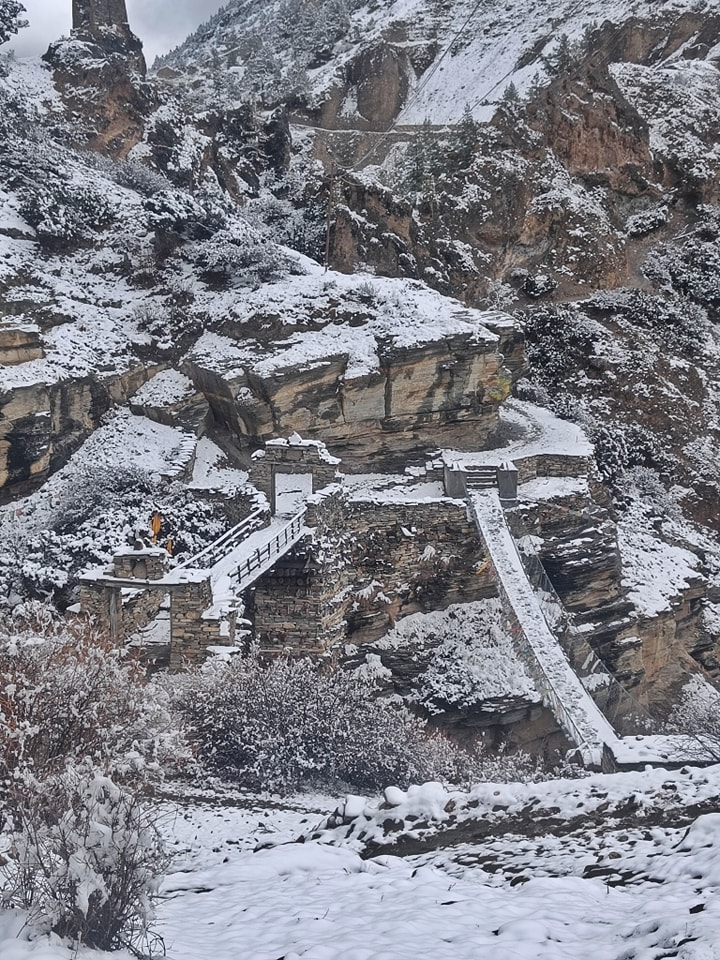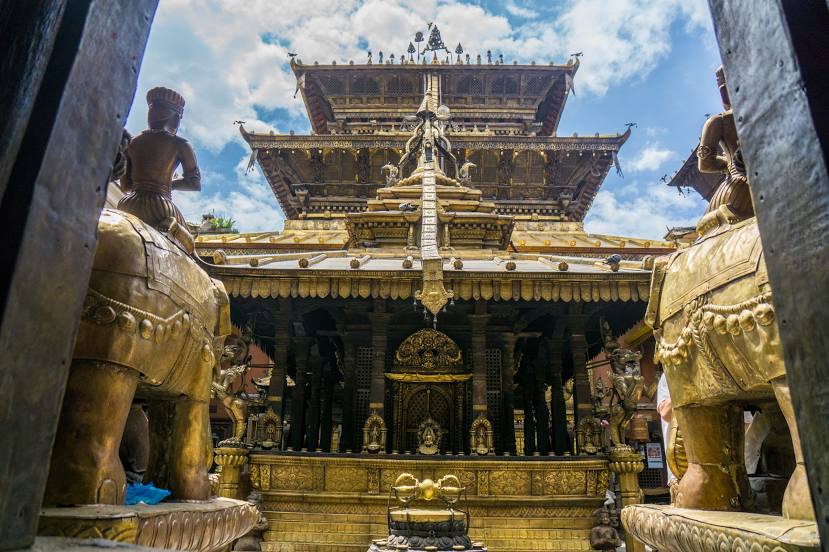![Peace Pagoda]()
The Peace Pagoda in Darjeeling, also known as the Japanese Peace Pagoda or Shanti Stupa, stands as a profound symbol of peace, unity, and universal brotherhood amidst the serene Himalayan landscape. Perched atop the Jalapahar Hill, this stunning white stupa is not just a major tourist attraction but also a beacon of the global peace movement initiated by the Nipponzan Myohoji Buddhist Order.
The Visionary Behind the Peace Pagoda: Nichidatsu Fujii
To understand the significance of the Darjeeling Peace Pagoda, one must delve into the life and philosophy of its inspiration, Nichidatsu Fujii (1885-1985). A revered Japanese Buddhist monk, Fujii was the founder of the Nipponzan Myohoji Buddhist Order. Deeply influenced by the horrors of World War II, particularly the atomic bombings of Hiroshima and Nagasaki, and inspired by Mahatma Gandhi’s philosophy of non-violence (Ahimsa), Fujii dedicated his life to promoting world peace through the construction of Peace Pagodas (Shanti Stupas) across the globe.
His vision was to create places where people of all races and creeds could gather, find solace, and unite in their shared desire for peace. The Peace Pagodas are not merely monuments; they are active sites of worship and meditation, designed to inspire non-violence and foster a sense of harmony among humanity. Over 80 such pagodas have been built worldwide, serving as powerful reminders of the devastation of war and the urgent need for global peace. The Darjeeling Peace Pagoda is one of these significant constructions, serving as the only one of its kind in the Eastern Himalayas.
Construction and Inauguration
The foundation stone for the Darjeeling Peace Pagoda was laid by Nichidatsu Fujii himself on November 3, 1972. The construction, a meticulous process involving dedicated efforts from the Nipponzan Myohoji monks, nuns, and volunteers from various countries, took approximately 20 years to complete. It was finally inaugurated on November 1, 1992, opening its doors to the world as a testament to enduring peace. The pagoda was designed by a Japanese architect, M. Ohka, who also lent his expertise to many other peace pagodas globally.
Architectural Splendor and Symbolism
The Darjeeling Peace Pagoda is a magnificent white structure that immediately captures the eye against the backdrop of the verdant hills and, on clear days, the majestic snow-capped Himalayas. Standing at a height of 28.5 meters (94 feet) and with a diameter of 23 meters (75 feet), it is notable for being the tallest free-standing structure in Darjeeling.
The design is a blend of traditional Japanese pagoda architecture with intricate Buddhist symbolism. Key architectural and symbolic features include:
- The White Dome: The gleaming white dome symbolizes purity, peace, and the universal nature of the Buddha’s teachings. Its clean lines and imposing presence create a sense of serenity.
- Golden Spire (Harmika and Chattra): At the pinnacle of the stupa is a golden spire, often adorned with traditional Buddhist elements like the “Harmika” (a square railing that traditionally enclosed the top of the stupa, symbolizing the enclosure around the Bodhi tree) and “Chattra” (ceremonial umbrellas, symbolizing royalty and protection).
- Four Avatars of Buddha: One of the most significant symbolic elements of the pagoda is the depiction of the four avatars or postures of Lord Buddha. These life-size statues are carved in sandstone, polished with a shining gold color, and are positioned in niches on the four cardinal directions around the circular structure of the pagoda. Each statue represents a significant event in Buddha’s life and his teachings:
- Sitting Buddha (Meditation): Often depicting Buddha in the “Bhumisparsha Mudra” (earth-touching gesture), symbolizing his enlightenment under the Bodhi tree and his resolve to attain spiritual liberation.
- Standing Buddha (Teaching/Preaching): Representing Buddha spreading the Dharma (his teachings) to his disciples and the world, signifying the beginning of his ministry.
- Reclining Buddha (Parinirvana): Depicting Buddha on his deathbed, symbolizing his passing into Parinirvana, the ultimate state of nirvana after death, and the cessation of suffering.
- Birth Buddha: A depiction of Buddha’s birth, often with his hand raised, symbolizing his arrival in the world to bring enlightenment.
- Eight Panels/Relief Carvings: The walls of the pagoda are adorned with eight intricately carved sandstone reliefs. These panels depict various important scenes and stories from the life of Gautama Buddha and his teachings, such as the “Great Departure of Siddhartha” (when he left his princely life in search of truth) and the “Gift of Mango Grove by Amrapali at Vaishali.” These carvings not only add to the aesthetic beauty but also serve as visual narratives of Buddhist philosophy.
- Prayer Wheels: Around the base of the pagoda, visitors will find rows of traditional Buddhist prayer wheels. Spinning these wheels clockwise is believed to accumulate merit and spread goodwill and compassion.
- Lion Statues: Two concrete models of lions, traditional guardians in Buddhist architecture, flank the staircase leading up to the pagoda.
The Adjacent Japanese Buddhist Temple
Complementing the Peace Pagoda is the adjacent Nipponzan Myohoji Buddhist Temple, built in 1972. This is a two-storied, traditional Japanese-style wooden building that serves as the monastery and prayer hall for the resident monks and nuns of the Nipponzan Myohoji Order. It’s a serene space where daily prayers and rituals are conducted. Visitors are often welcome to observe or even join in the prayer sessions, which typically involve the rhythmic drumming and chanting of “Namu Myōhō Renge Kyō” (Devotion to the Mystic Law of the Lotus Sutra), a core practice of the Nichiren Buddhist tradition. The tranquil atmosphere inside the temple provides an ideal space for meditation and quiet contemplation.
A Haven of Peace and Panoramic Views
Beyond its spiritual significance and architectural beauty, the Peace Pagoda offers one of the most spectacular panoramic views in Darjeeling. Situated on a hilltop, it provides unobstructed vistas of:
- The Darjeeling Town: A bird’s-eye view of the charming hill station, with its colonial architecture and bustling streets.
- The Himalayan Range: On clear days, the majestic snow-capped peaks of the Kanchenjunga range (the third-highest mountain in the world) dominate the horizon, creating a breathtaking backdrop. Other snow-capped peaks are also visible, offering a truly awe-inspiring spectacle.
- Lush Greenery: The pagoda is surrounded by dense pine forests and meticulously maintained gardens, adding to the tranquil and picturesque setting.
The combination of spiritual serenity and stunning natural beauty makes the Peace Pagoda an ideal spot for introspection, photography, and simply soaking in the peaceful ambiance. Many visitors choose to spend considerable time here, just sitting and absorbing the tranquility and the magnificent views. The location is particularly captivating during sunrise and sunset, when the changing light paints the sky in dramatic hues and illuminates the Kanchenjunga peaks.
Significance and Impact
The Darjeeling Peace Pagoda holds immense significance for several reasons:
- Symbol of World Peace: Its primary purpose, as envisioned by Nichidatsu Fujii, is to serve as a universal symbol of peace, non-violence, and harmony, transcending religious and cultural boundaries. It reminds humanity of the devastating consequences of conflict and the importance of fostering unity.
- Spiritual Hub: It is an active Buddhist site where prayers for global peace are continually offered. It provides a sanctuary for spiritual seekers and a place for quiet meditation.
- Cultural Exchange: The pagoda embodies the cultural exchange between Japan and India, particularly the spread of Buddhism. It’s a tangible link to a global movement for peace.
- Tourist Attraction: Its stunning architecture and unparalleled views make it one of Darjeeling’s most popular tourist destinations, attracting visitors from around the world.
- Local Importance: For the local community, including the Tibetan community in Darjeeling, it represents a continued commitment to peace and a connection to Buddhist heritage.
Visitor Information and Tips
- Location: The Peace Pagoda is located on the slopes of Jalapahar Hill, a few kilometers from the main Darjeeling town center.
- How to Reach:
- By Taxi: The easiest way to reach is by hiring a local taxi from Darjeeling town. It’s about a 10-15 minute drive.
- On Foot: For those who enjoy walking, it’s a pleasant uphill stroll from Chowrasta (The Mall) via Lebong Cart Road, taking about 30-40 minutes. The walk offers scenic views.
- Entry Fee: There is no entry fee to visit the Peace Pagoda or the Japanese Temple.
- Timings: The Peace Pagoda is generally open from 4:00 AM to 7:00 PM daily.
- Prayer Timings: Visitors can sometimes join or observe the prayer sessions held by the monks and nuns, typically from 4:30 AM to 6:00 AM in the morning and 4:30 PM to 6:30 PM in the evening. Observing these rituals can be a deeply moving experience.
- Best Time to Visit:
- Weather: The months of March to June and October to December offer pleasant weather and typically clear skies, ideal for panoramic views of the Himalayas.
- Time of Day: Early morning (for sunrise and peaceful ambiance) or late afternoon (for sunset views and a serene atmosphere) are highly recommended.
- Dress Code: As it is a religious site, it is respectful to dress modestly.
- Photography: Photography is generally allowed in the complex, but it’s advisable to be respectful, especially during prayer times inside the Japanese Temple.
- Amenities: There are limited small shops or vendors outside the complex for water or snacks. Public restrooms may be available.
- Nearby Attractions: The Peace Pagoda can often be combined with a visit to the nearby Dali Monastery and, for those on a longer Darjeeling itinerary, other sites like Batasia Loop.
In essence, the Peace Pagoda in Darjeeling is a harmonious blend of spiritual devotion, architectural beauty, and natural grandeur. It stands as a powerful testament to the enduring human aspiration for peace and a must-visit destination for anyone seeking tranquility and a profound connection with the universal message of non-violence.

